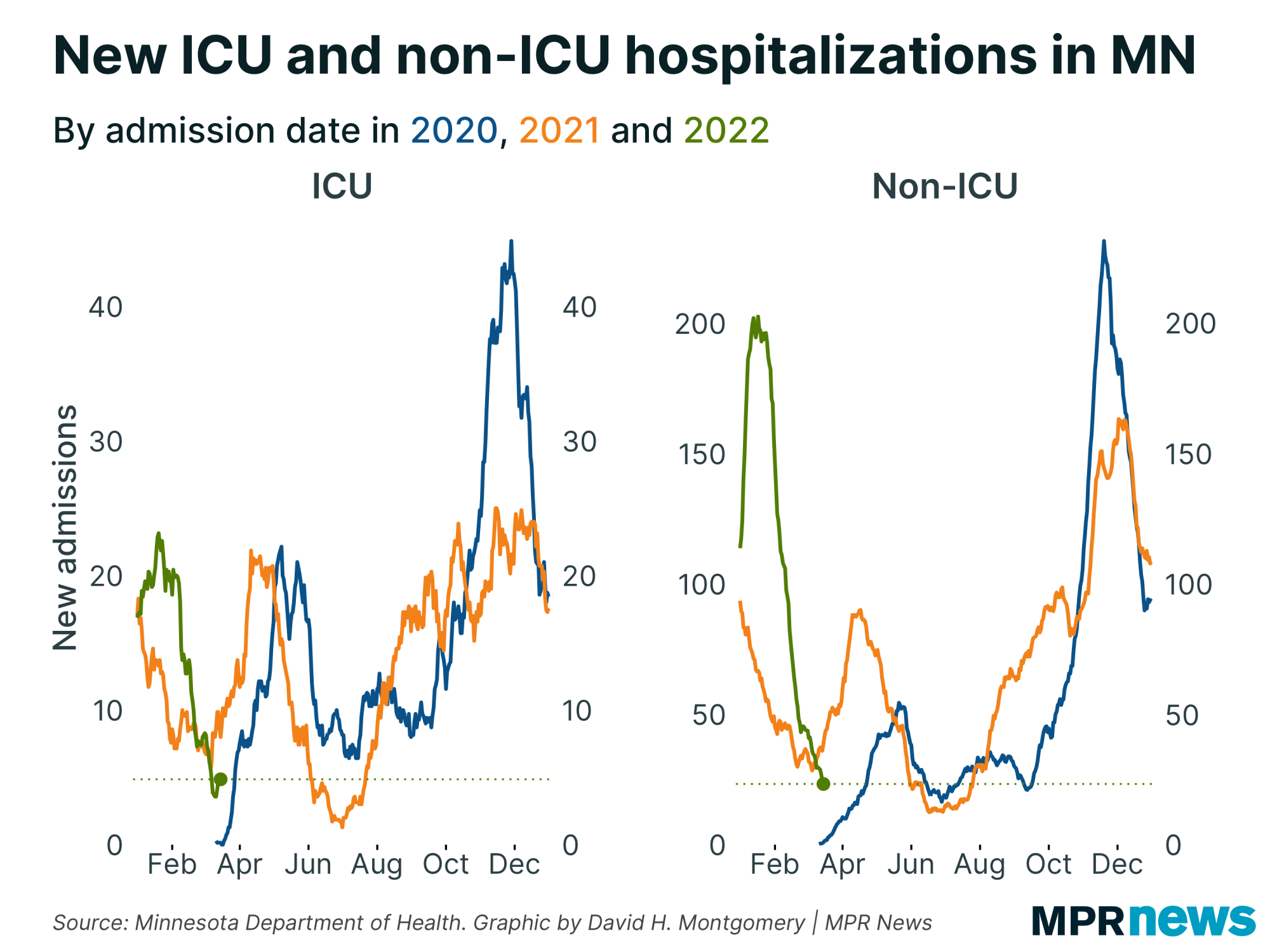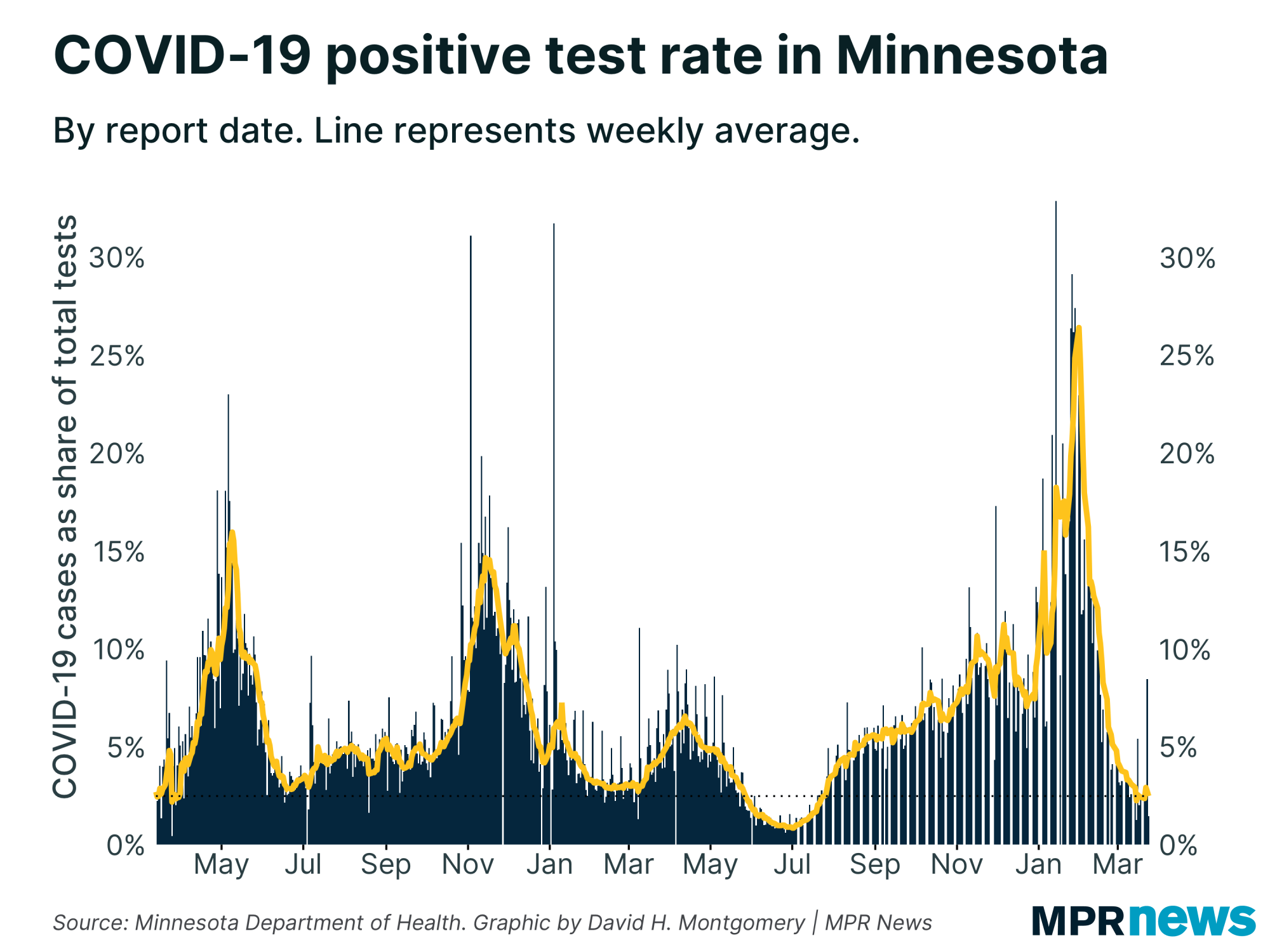Jan. 25 update on COVID-19 in MN: Walz presses changes to boost vaccination pace

Go Deeper.
Create an account or log in to save stories.
Like this?
Thanks for liking this story! We have added it to a list of your favorite stories.
Updated: 5 p.m.
Gov. Tim Walz’s office on Monday unveiled plans to deliver COVID-19 vaccinations to 15,000 metro area educators, ease the online shot signup hassles for those 65 and older and push providers to get shots into arms more quickly.
The moves come amid rising frustrations around the pace of vaccination in Minnesota as the state struggles to secure more supply from the federal government.
Hoping to at least speed the process, Minnesota officials said the state will set a goal for vaccine providers to 90 percent of their vaccine doses into arms within three days of receiving them, and all doses within one week.
Providers not meeting those goals could see changes to their vaccine allocations, the governor’s office said, noting that national chain pharmacies are lagging behind other vaccine providers in getting shots to Minnesotans.
Turn Up Your Support
MPR News helps you turn down the noise and build shared understanding. Turn up your support for this public resource and keep trusted journalism accessible to all.

The Health Department also said it had fixed an online shot signup site that crashed last week as people 65 and older rushed to make appointments for a limited supply of vaccine.
This week, older Minnesotans will have a 24-hour window starting at 5 a.m. Tuesday to register for a chance to get a shot appointment. It will be random selection rather than first come, first served. The state has 8,000 doses earmarked this week, 2,000 more than last week.
Demand will still far outpace supply, but the process of trying should be smoother this week, Walz said.
The governor’s office also unveiled plans to vaccinate 15,000 Twin Cities area teachers, school staff and child care providers this week.
The mass vaccination focused on teachers, school staff and child care workers will happen later this week at St. Paul’s RiverCentre complex. It’s meant for school districts, charter schools, tribal schools and nonpublic school groups. Eligible workers need to make appointments through their organizations. No walk-ups will be allowed.
More than 250,000 Minnesotans have received at least one dose of COVID-19 vaccine, but that’s less than 5 percent of the population. The state’s used about half its allocated shots so far.
COVID conditions continue to improve
The moves came hours after the Health Department released data offering continued optimism on COVID-19 heading into the last workweek of the month.
The department reported 794 confirmed or probable cases of the disease — along with 3 more deaths; 543 people were in the hospital with COVID-19, with 104 needing intensive care as of Thursday.

There are 10,402 active, known cases of the disease, the lowest level since mid-October and down dramatically from late November, when active cases hovered around 50,000. Overall, conditions have improved significantly from late November, early December.

Monday’s data put Minnesota at 455,783 cases in the pandemic. Of those, about 96 percent of people have recovered to the point they no longer need to be isolated.

The newly reported deaths raised Minnesota’s toll to 6,098. Among those who’ve died, about 64 percent had been living in long-term care or assisted living facilities; most had underlying health problems.

Cases spread across age groups, regions
People in their 20s still make up the age bracket with the state’s largest number of confirmed cases — more than 86,000 since the pandemic began, including more than 45,000 among people ages 20 to 24.

The number of high school-age youth confirmed with the disease has also grown, with more than 35,000 total cases among those ages 15 to 19 since the pandemic began.
Although less likely to feel the worst effects of the disease and end up hospitalized, experts worry youth and young adults will spread it to older relatives and members of other vulnerable populations.
It’s of particular concern because people can have the coronavirus and spread COVID-19 when they don’t have symptoms.
Caseloads continue to trend down across all regions of the state following a late December, early January blip.

Hot spots continue to pop up in rural counties relative to their population.

Caseloads still heaviest among people of color
In Minnesota and across the country, COVID-19 has hit communities of color disproportionately hard in both cases and deaths. That’s been especially true for Minnesotans of Hispanic descent for much of the pandemic.

Even as new case counts ease from their late November, early December peaks, the data shows people of color continue to be hit hardest.
Distrust of the government, together with deeply rooted health and economic disparities, have hampered efforts to boost testing among communities of color, officials say, especially among unauthorized immigrants who fear their personal information may be used to deport them.
Similar trends have been seen among Minnesota’s Indigenous residents. Counts among Indigenous people jumped in October relative to population.

Latest developments
MN confirms first COVID-19 variant from Brazil
Minnesota health officials Monday said they’d confirmed a version of the COVID-19 virus known as the Brazil P.1 variant in a specimen from a Minnesota resident with recent travel history to Brazil.
It’s the first of the Brazil P.1 variant in the United States, the Minnesota Department of Health said in a statement.
“While this variant is thought to be more transmissible than the initial strain of the virus that causes COVID-19 disease, it is not yet known whether the variant causes more severe illness,” the department added.
— MPR News Staff
MN lawmakers press new COVID relief for business
Minnesota lawmakers are speeding through a bill to prevent businesses from facing additional costs due to COVID-19-related layoffs.
The state Senate unanimously passed a measure Monday that would exclude 2020 from the ratings that determine how much in tax businesses pay into Minnesota’s unemployment fund. The House could vote in the coming days to send the bill to Governor Tim Walz.
Significant layoffs can hurt a company’s rating and drive up its rates. Sen. Eric Pratt, R-Prior Lake, said the pandemic and state restrictions left some businesses with no other option. “What we want to make sure is that our employers aren’t penalized for the impacts of the COVID and the executive orders.”
Minnesota has paid out billions of dollars in unemployment aid to hundreds of thousands of sidelined workers. The state is presently borrowing money from the federal government to meet its unemployment benefits costs, but there's a chance some of that could be forgiven.
The proposed change to the calculations would also affect newer businesses by giving them an industry average that spares them from any coronavirus-related impact.
— Brian Bakst | MPR News
Top headlines
Teachers to get 15K more vaccines this week as Walz rolls out education priorities: Vaccine doses for teachers and child care providers are expected to more than double this week to 15,000 as state leaders open a new metro vaccination site and Gov. Tim Walz announces education priorities.
Months after his COVID-19 death, woman sorts out what her father left behind: A Minneapolis woman lost her father to COVID-19 early in the pandemic. But she didn’t feel the impacts of his death in a single moment. They’ve rippled out over months. She’s still sorting through all he left behind.
A year into pandemic, with no cure in sight, ICU doctors take COVID-19 one day at a time: In a year marked by tragedy and heartbreak, health care providers have been able to study COVID-19 in real time and figure out ways to keep more of its victims alive. Inside Mayo Clinic's COVID-19 intensive care unit, staff say that though they are saving more people, there's still no magic formula.
Gov. Walz preps ‘COVID-19 recovery' budget for Tuesday release: Gov. Tim Walz will release a $50 billion two-year budget on Tuesday that will focus on where Minnesota goes after a year of turbulence from the COVID-19 pandemic.
State sues Lakeville bar for operating without license: The Minnesota Department of Health has sued the owners of a bar in the southern Twin Cities metro area for serving food and beverages without a license, the state said Saturday. The bar kept operating in December and early January in defiance of Gov. Tim Walz's order barring indoor dining at bars and restaurants to slow the spread of COVID-19.
COVID-19 in Minnesota
Data in these graphs are based on the Minnesota Department of Health's cumulative totals released at 11 a.m. daily. You can find more detailed statistics on COVID-19 at the Health Department website.



